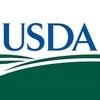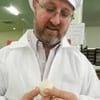Check out what is new in Poultry Industry
Find the best technical articles, forums, and videos on Poultry Industry at Engormix. Enter now and interact with the world's largest agricultural social network.
by Sam Shafer
When humans domesticate and breed an animal, they tend to select for a very specific trait. In laying hens, artificial selection for high egg production has led to hens that can produce 320 eggs a year. But could artificial selection have unintentionally altered hen brain morphology?
In a new study, published in the July issue of Poultry...
Comments : 0
Recommendations: 0
.mp4&w=3840&q=75)
Aaron Kiess (Mississippi State University) and Tomi Obe (University of Georgia) talk about a current hot topic in the poultry processing industry: salmonella sanitization. Let's Squawk About It is a monthly interview segment by the Poultry Science Association....
Comments : 0
Recommendations: 0
...
Comments : 0
Recommendations: 0
Fermentation products with main and side activities Feed enzymes are mostly produced by fungi or bacteria. Those living organisms produce a wide variety of different enzyme proteins. For commercial practice, only a limited number of those activities is assayed in the laboratory. Assaying e.g. the xylanase activity obviously results in a quantification of the xylanase level, while not providing information about other activities that remain present in the fermentation product. In...
Comments : 0
Recommendations: 0
...
Comments : 0
Recommendations: 0
A healthy gut is an important key to improve animals’ production, and a balanced intestinal microbial ecosystem is indispensable for animals and their gut. The United States FAO and World Health Organization (WHO) define probiotics as "active microorganisms that are...
Comments : 4
Recommendations: 2
INTRODUCTION Despite superior color vision, hue discrimination, and motion detection, broiler chickens are typically kept in lighting conditions deemed suitable for humans. Environments tailored to poultry vision could lead to improvements in bird health, welfare, and performance by supporting the development of normal vision and in male broilers (Edwards, 2003). UVB exposure also improved bone mineral density, egg production, and levels of vitamin...
Comments : 0
Recommendations: 0
DIGEST FAST® allows to reduce up to 10kg of fat in the ration, an important saving that leaves us free space in formulation. Therefore, in addition to saving the cost of fat, the nutritionist has a valuable tool that...
Comments : 2
Recommendations: 4
Avian species rely heavily on vision to provide them with necessary information about their surroundings. Chickens rely on their sense of vision to recognize: Other chickens. Predators. Another chicken's intentions (which allows birds to avoid unwanted aggression). Location of...
Comments : 4
Recommendations: 3


Evaluation of methionine sources on performance and carcass traits of broilers at different dietary sulfur amino acid levels under northern European and middle Eastern conditions
Suggested link
.mp4&w=3840&q=75)
Chris Morrow (Bioproperties) commented about the problems that arise from mycoplasma infections in layer farms and explained the benefits of a live mycoplasma vaccination program, including costs and profits....
Comments : 35
Recommendations: 9
.mp4&w=3840&q=75)
Dr. Hector M. Cervantes, Senior Manager, Poultry Veterinary Services, Phibro Animal Health Corporation, gave this presentation during the 2018 NIAA Antibiotic Symposium: New Science & Technology Tools for Antibiotic Stewardship....
Comments : 0
Recommendations: 2
.mp4&w=3840&q=75)
Shawna Weimer (University of Maryland) discusses one of the latest impacts COVID-19 has had on the poultry industry: Mail Order Chicks. Let's Squawk About It is a monthly interview segment by the Poultry Science Association....
Comments : 3
Recommendations: 0
...
Comments : 0
Recommendations: 0


Mycotoxin Testing in the Feed Chain: A Risk Prevention Strategy for Raw Material Suppliers, Grain Storage Facilities and Processors, and Feed Manufacturers
Suggested link
...
Comments : 0
Recommendations: 0
...
Comments : 1
Recommendations: 0
Life Rainbow Biotech has developed a liquid type nutrition supplement – Gano-met® provides broiler and layer essential nutrition instantly and stress relief. Gano-met® contains extracted Ganoderma lucidum and methionine hydroxy analog (MHA), riches in active compounds such as required amino acid, polysaccharides, and triterpenoids. Ganoderma lucidum is an edible traditional medicine mushroom, also known as “Lingzhi”(Chinese) and...
Comments : 0
Recommendations: 3
...
Comments : 0
Recommendations: 0
...
Comments : 1
Recommendations: 0








.mp4&w=3840&q=75)





















